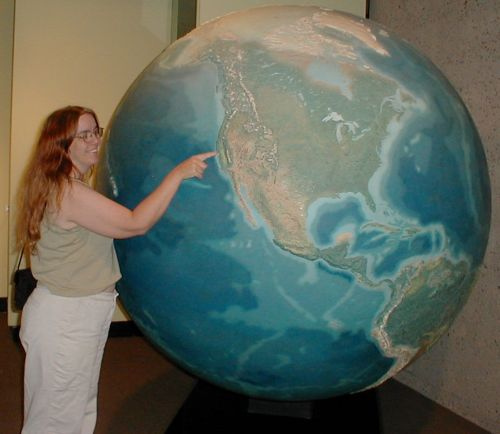I grew up in a 1950s housing development, thick with oaks and chaparral, on the edge of fields and oak woodlands, near the banks of
Churn Creek. Mom let us dig in the yard – I loved my real metal Tonka trucks and old silverware digging tools – and we camped in rural Shasta County several times a year. In the hottest months, when the house was too hot to sleep in at night, we slept on the back lawn, and watched meteors fly overhead, while Mom taught us the names of constellations.
I learned to swim in creeks and lakes. I peeled endless acorns in my attempts to make acorn mush under trees while friends had tea parties in their bedrooms. I used my magnifying glass to set small piles of oak leaves on fire in my driveway, knowing better than to try that out in the woods.
When I was little, we were allowed to run around the woods (some of it has become a
giant church complex, some is now protected as
park) and nearby fields. I think I was 7 or 8, just old enough for my mother to append “bring your sister” to my requests to go play “in the fields,” as we called them. My sister wasn’t yet in kindergarten, and hauling her along was like dragging an anvil behind me as I ran off to the trails and creekside on the road to adventure.
Mom taught us how to avoid rattlesnakes and poison oak (we didn’t assume there were mountain lions around, but there had to be, we were right on the edge of town), and told us to be home before dusk, then sent us out to play. There was really nothing we were forbidden except to go into the rain culvert where Churn Creek went under Highway 44, in case of flash flood – so we did, of course, and would stand under the stormwater grates and listen to the roar of cars and trucks overhead, reveling in the danger. I didn’t climb trees, but the live oaks and black oaks often had multiple lanes of commuting black ants, and the gray pines were sticky with sap, and weren’t good climbing trees.
Instead, we collected sticks and branches and crunchy, prickly fallen leaves and wove forts not much bigger than our bodies. After intense summer thunderstorms, we’d go out to where the boys on their bikes had worn ruts over the dead grass and hard dirt near the creek, and slide down the mud-slick ramps on our bottoms. We had church clothing, school clothing, play clothing, and “mud clothing,” the bottom of the barrel, as Shasta County’s iron-rich soils leave permanent red tint on any clothing that touches it when it’s wet.
We picked wildflowers in the spring, and on the first of May, we made paper baskets, then filled them with brodaeia and shooting stars and lupine and wilting poppies and hung them on neighbors’ doorknobs, ringing the bell, then running away. We knew the names of most of the flowers – Mom called everything by name -- but she called all the brodaeia species “blue dick,” and called all the hummingbirds “ruby-throated” because in our basic birding guide, that was the only hummingbird with a red throat. (Anna’s weren’t in the book, and weren’t part of Mom’s Modoc County childhood, as they’ve only gradually moved north with human population.) Turkey vultures were “buzzards.” Everything had a name, though they weren’t always accurate names. We called gray pines “digger pines,” as that was their name then. We knew they were named after the foothill native people who were called “Digger Indians,” but even though my grandmother was an advocate for and sympathetic friend of the Pit River and Maidu people, it never occurred to any of us that “digger” was a racist euphemism.
One of my iconic memories that defines what gave root to my adult curiosity came on a late spring day, on one of the several trips to Burney Falls and Mount Lassen that we took every year. Redding was much smaller, then, and roads in the surrounding hills were often quiet. We were somewhere up near Kings Creek or Hat Creek, and there were turkey vultures rising on the morning thermals. They seemed to be doing their morning cruise more than looking for food, so Mom pulled over. “Get out of the car,” she told one of my older sisters. “Lie down in the middle of the road.”
Terry’s mouth fell open, and she shrieked, “WHAT?”
“Just lie down.”
“I’ll get run over!”
“I’m watching, I’ll tell you whether a car is coming.”
These days, ornithologists know that turkey vultures hunt by smell, not sight, but in the sixties, most people hadn’t learned that. My sister lay in the middle of the road for awhile – a minute, or five minutes, I was young – then leaped up to brush her clothes off and yell at Mom for risking her vulnerable child’s life.
The vulture hadn’t landed, no traffic had come by.
Had a vulture landed, would Mom have allowed it to pick out Terry’s eyes? Would she have scared it off? I might never know. Mom was that kind of woman.
This is the story that I most vividly remember, about Mom’s fascination with nature, and how she fed it to her children, but it’s one of many. Her willingness to live in nature, not as a spectator, but as an active participant, flowed onto and into me along with her milk and her singing when she was happy, and later her taste for ginger and marzipan.
